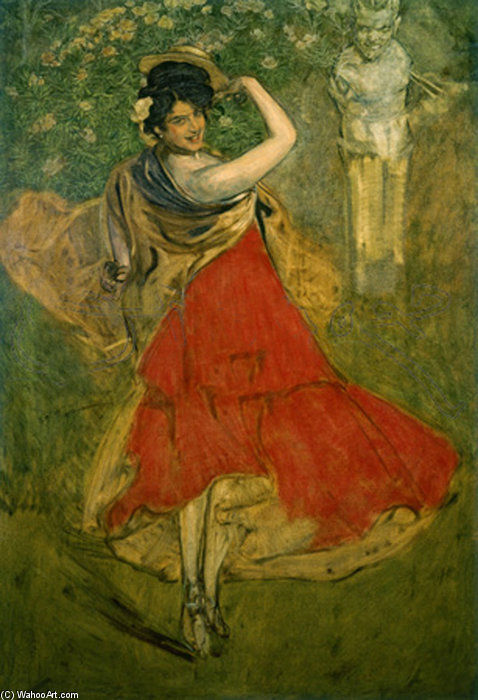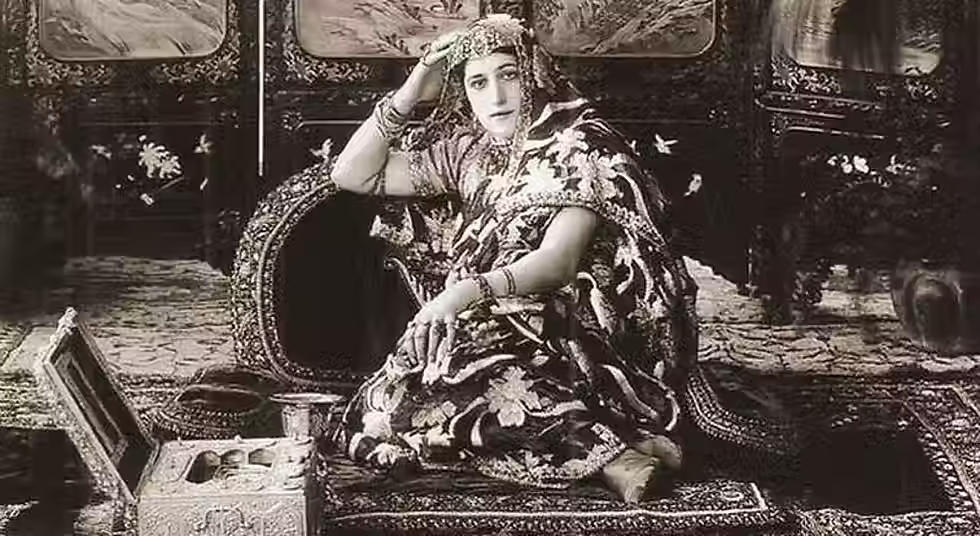The Forgotten Maharani: Anita Delgado’s Story Begins in Málaga
- Secret CDS
- May 15
- 4 min read
Updated: Jun 27
A diva, an icon: But she's never really had her moment.
An almost-forgotten Málaga queen with an incredible real-life fairy story.
Strolling through the art gallery of the Museum of Málaga (which, while not a hidden gem, is certainly a massively underrated space), I came across a captivating painting.
A woman, resplendent in a muted gold sari, reclines — looking both at ease and unease. Her body is relaxed, but there’s perhaps a haunting sadness in her eyes.
I was mesmerised — even more so when I saw another painting of the same woman, this time in full Western, regency garb. The same woman, two faces. One regal, one bohemian. A composed member of polite society and the aristocracy; the other, full of passion, drama and melancholy.

A bit of online research reveals that Málaga is the birthplace of our very own rags-to-riches
heroine: Anita Delgado.

Anita was born in 1890 in Málaga to a working-class family. Her father ran a small café, and from an early age Anita showed a talent for music and performance. She began performing flamenco with her sister Victoria in local cafés, quickly gaining attention for her beauty and stage presence. By her early teens, she was performing regularly in Madrid. Though her roots were humble, Anita carried an elegance that set her apart, traits that would later captivate Indian royalty and transport her from the streets of Andalucía to a royal palace in a faraway land.

She ran freely in Madrid with the bohemians and artists of the time. A kindred spirit in this respect, craving a wild and unpredictable life , making her transition to the ostentatious royalty of the Maharaja even more unique. Much of what I’ve learned about Anita comes from the book Passion India by Javier Moro, which I can highly recommend. Her life is a colourful journey, with far more detail than I can go into here. You can buy a copy here
She met Maharaja Jagatjit Singh of Kapurthala during the wedding celebrations of King Alfonso XIII of Spain in 1906, where she was performing, and he became enamoured with her.
Her parents became engaged in negotiations for her hand in marriage. What young Anita believed was a match of love, perhaps partly true, came with things no one warned her about. The Maharaja was already married to four other women. She would be joining a harem, in an alien culture, among women who despised her.

The Raj at the time was an opulent world of extravagant parties, all-night tango dancing, feasting and lavish spending. Though she was at the pinnacle of society among the ultra-wealthy, her humble origins meant she was always an outsider, not just among the Indian elite, but also within the colonial aristocracy. She was promised a world of unimaginable luxury, but with it came the heavy burden of loneliness.

A sensitive soul, she craved true intimacy. That made the splendour of her new life feel even more hollow. Her story isn’t without scandal, whether it’s the tale of her demanding a huge crescent moon emerald from the forehead of a sacred temple elephant to be gifted to her (her jewellery collection was legendary), or the long-whispered rumour of a lifelong affair with her stepson.
In India, she quietly fought for women’s rights before returning to Spain, where she lived in Madrid as a slightly eccentric aristocrat until her death.
Penélope Cruz bought the rights to the book Passion India. Production started but later stalled — the descendants of the Maharaja blocked the film over its more scandalous elements.
And if you mention her name to many malagueños, you’re likely to get a blank stare. Maybe her legacy, so free and wild, was quietly buried during the Franco years. Whatever the reason, her story deserves to be told.
Where to find Anita in Malaga:
Calle Pena 17: you can find a plaque to commemorate her place of birth and where she grew up before moving with the family to Madrid
Santuario de la Victoria: An absolute Baroque blockbuster of a church and home to one of Malagas true Atlas Obscuras is the resting place of a magnificent religious mantle cloth made by Paris fashion house Chez Paquin as a highly ornate and opulent dedication to the saint who she loved and cherished and prayed to in her time and need through a difficult childbirth. And on delivery of a healthy baby she had this beautiful altar cloth made which now adorns her favourite saint.
Museo of Malaga : The two beautiful portraits of Anita by Masses and Henri Gervex Peltier. A peaceful & beautiful old building formally the customs house of Malaga Port. Archaeology spanning the whole region on one floor and a lovely art selection through the ages of Spanish art - not at all overwhelming and as it´s free to EU residents and 1.50 to non EU an absolute bargain. The small temporary exhibits are usually really good - last year they had famous UK photographer Martin Parr's 'Malaga Express' exposition.


Comments